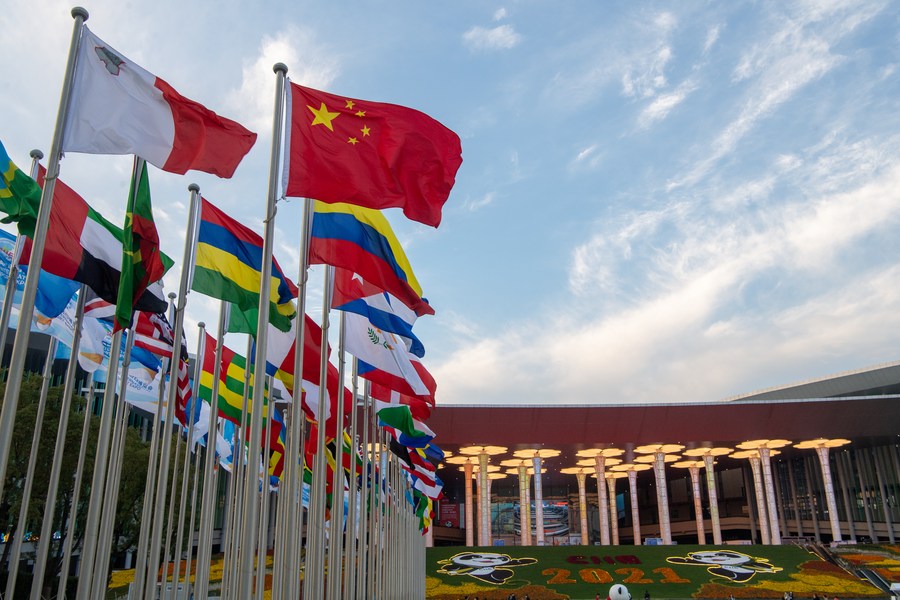The Nation’s Market Unification

The world is looking forward to seeing a more open Chinese market, with international capital preparing to tap into its huge potential.
On April 10, the Communist Party of China (CPC) Central Committee and the State Council unveiled a new guideline for fast-tracking the establishment of a unified national market that is efficient, standardized, open and allows fair competition. It is also vital to establish unified market rules and regulations across the country and promote the smooth flow of goods, factors, and resources on a wider scale. The guideline emphasizes that local protection and regional barriers should be broken down.
The Chinese Government intends to improve the efficiency and expand the scale of China’s domestic market against the global backdrop of pandemic resurgences and a weak economic recovery. Meanwhile, China itself is plugging a dual circulation development paradigm that takes domestic circulation as the main body, with domestic and international circulations reinforcing each other.
One decade ago, the Central Committee of the CPC decided to establish a unified, open, competitive and orderly market system, serving as the basis for the market to take on a decisive role in resource allocation. In recent years, the Central Government has eliminated varied rules and practices that hamper market unification and fair competition, fully implemented the negative list system of market access and developed fundamental institutions in line with the principles of equal access, fair competition, impartial oversight, openness and legal compliance. Progress has been made as China’s socialist market economy has taken shape.
However, throughout this process, supporting measures have yet to be put in place; not even to mention the elimination of existing restrictions. Enterprises have encountered their fair share of institutional obstacles. The market for factors of production lagged behind, there was no consensus on market regulation, plus local and regional barriers often put their spokes in the wheels; overall insufficient market competition further hindered structural adjustments. Until these problems are all solved, forging a sound socialist market economy will remain a distant dream.
The guidelines demonstrate the Central Government understands the obstructing influences.

China will now further unify its basic systems and rules, including those for property rights protection, market access, fair competition and social credit. Facilities and platforms in different sectors, including logistics, deal information and transaction platforms, should be connected across the country. Unified markets should be also built for various production factors, including land, labor, capital, technology, data and energy. Unified standards for goods and services are underway and supervision, regulation and law enforcement will become more standardized.
At the same time, the government will strengthen its anti-monopoly efforts, deal with unfair competition in accordance with the law, and comprehensively clean up preferential policies that discriminate against foreign enterprises as well as those funded by investments from other parts of China.
China will fully leverage the decisive role of the market in resource allocation and give better play to the government’s function. Intensified market development cannot be seen separate from national market unification; the free flow of goods and factors as well as efficient and fair resource allocation all must prevail. The new development paradigm urgently requires a nationally unified big market. Only through a highly interconnected domestic market and a channel to achieve enhanced market efficiency, improved labor productivity, increased incomes, as well as improved quality across the board, can market capacity expand and advantages of unification be given full rein.
A unified Chinese market in turn supports the international community. The world is looking forward to seeing a more open Chinese market, with international capital preparing to tap into its huge potential. This will promote the formation of a domestic circulation, deepen China’s opening up based on flows of goods and factors of production, optimize the business environment whilst adhering to the principles of marketization and internationalization, and establish a new system for a higher-level open economy. The combination of the aforementioned will intensify connectivity between domestic and international markets, further enhance the free, safe and convenient cross-border flow of factors of production, and create a strong gravitational field for advanced resources around the world.
 Facebook
Facebook
 Twitter
Twitter
 Linkedin
Linkedin
 Google +
Google +










